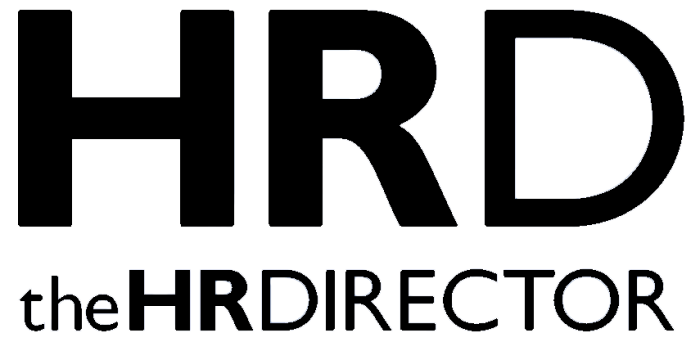One of the most significant assets to any company is the people performing various job roles. Success may begin with a unique idea or system of processes, but it grows and is supported by physical human beings learning a skill or trade and perfecting an operation. Having spent over a decade as an HR Manager at Zubr Capital Investment Company, I have witnessed first hand how strategic talent management can either drive or hinder business growth. From conducting HR due diligence to setting up HR management systems and leading executive recruitment, I’ve seen the difference a well-structured approach makes in securing long-term success.
The business strategy needed to account for human assets must adapt over time. To secure sustainable growth, companies looking to remain competitive must also attract, develop, and retain top talent. Yet, too often, I see companies treat talent acquisition as a secondary HR function rather than a core business strategy. The reality is that people, alongside market positioning, finance, and business processes, form the backbone of long-term business viability.
Below, I outline a strategic HR framework designed to help your business not only attract top talent but also retain them over the long term and develop their value in a way that aligns with future growth.
The Two-Tiered HR System
Most global businesses leverage HR on two separate levels. Those include corporate level and individual employee management. At the corporate level, HR provides the necessary support for everything from staff budgeting to process automation and cultivating a culture of respect so people can focus on productivity.
The individual level is significantly different. Here, HR seeks to develop a robust employee life cycle, including all stages of interaction:
- Recruitment and hiring
- Onboarding and integration
- Employee motivation and retention
- Training and career development
- Performance evaluation
- Offboarding and transition planning
Combining these two HR scopes of focus is how you can address current employee concerns while providing leadership with the data and nuance for strategic future planning.
Crafting an Effective HR Strategy
There is no universal HR strategy that will solve every business challenge. The strategy must be adapted to the business model, industry, and growth objectives.
For example, an HR strategy addressing organizations like EPAM (IT Outsourcing) would focus more on developing a mix of senior, mid-level, and junior employees. They would hire interns at a lower cost, invest heavily in training, and encourage knowledge transfer from seniors to juniors.
IT product companies like SpaceX are different. The focus here is an HR strategy where senior-level experts are the priority. There is a high need for results-driven success that only experienced professionals can provide. Hiring juniors or interns would only get in the way of rapid execution and minimal training time.
Think of HR priorities as an ever-evolving process. It must be refined to meet the unique needs of the organization. What works for one team to retain key personnel would be different for another company focused on improved workforce performance.
In addition, your strategy must also address segment employees who fulfill specific tasks and have crucial “know-how” that can only be developed over years of engagement. These segment teams may be a significant portion of your operational “skeleton” and are likely to earn a good salary.
Staff Budgeting: Aligning HR Costs with Business Growth
Employee wages and expenses comprise a big portion of a company’s budget. When you have landed on an HR strategy, it must be translated into an easy-to-understand financial model. Staff budgeting is often underestimated. Analyzing our portfolio companies, we see that salaries make up less than 40% of total personnel costs. Personnel costs extend well beyond base salaries due to:
- Bonuses and performance incentives
- Training and professional development
- Social benefits and well-being programs
- Tax and salary-based contributions
- Relocation assistance
- Paid leave and sick day allowances
The trick is not to have personnel costs grow at the same rate as revenue. These are not equal “if/then” budgets. Instead, your personnel costs should rise “proportionally” with your revenue. You can measure this through two financial metrics including:
- Labor Productivity: The amount of revenue generated by each employee in a year.
- Personnel Profitability: The revenue earned for every euro spent on human assets.
Benchmarking these two metrics helps you better optimize current workflows and expenses without compromising the efficiency you need to maintain a competitive advantage.
Executive Incentives
Your workforce is not only junior and high-level professionals. Top management positions and executive board members must also be incentivized to stay on for improved operational continuity. The compensation these individuals receive must provide short-term performance compensation as well as long-term company growth.
As a general rule, you can think of management or executive pay through fixed salary (50-60% of total compensation), variable bonuses (ranging up to 50%) offered monthly, quarterly, or annually, and KPIs where bonuses are tied to measurable business outcomes.
Many executives are incentivized by option programs or shareholder goals. These fall into two common models:
- Small Executive Pools (1-7% of company shares are distributed among a small number of managers – common with EU firms).
- Broad Employee Participation (stock options to different levels of employees – common in North America).
Tying some form of compensation to business goal achievement or profitability is essential. You want your employees to feel fairly rewarded when they overcome a business goal or bring in significant earnings for a given period.
Attracting Experts and External Advisors
Even the most experienced and capable “in-house” HR teams cannot cover all aspects of their roles. In these cases, you should seek the expertise of external advisors. Everything from efficiency leaders to HR strategists to hiring support can help you better refine your strategies.
Partnering with industry experts offers industry-specific expertise, independent assessment of your current operations, and strategic planning so you can further accelerate growth. However, it is also crucial for mitigating risks.
A modern business cannot ignore the ever changing whims of socioeconomic and political shifts. Having an outside expert who can prepare your business through futureproofing empowers your team to focus more on growth instead of trying to “weather a storm.”
Zubr Capital is an excellent example of leveraging both internal and external HR support. The current HR in-house team focuses on company strategy, finance, HR processes, and business processes. Zubr also attracts experts in commercial due diligence, strategy development, and independent board observers to ensure a multi-national lens of operations. That flexibility ensures long-term resilience in the business world.
Technology for Workforce Management
HR is no longer only human-managed. Innovative technologies are allowing HR managers and leaders to track critical workforce metrics. You get much more efficient reporting of things like:
- Headcount distribution by location and department
- Performance review results
- Salary adjustments and benchmarking
- Recruitment effectiveness
- And much more
AI and automation at any level need to be safeguarded as valuable assets. In turn, you also want to have multiple redundancies and security processes so no leakage of private information is ever put at risk.
The power of automation and analytics provides companies of every level with data-driven HR decision-making that will optimize operations. The benefits far outweigh the risks, but work with a reputable provider so your information is safe, secure, and readily available based on the makeup of your system (in-person, hybrid, cloud, remote, etc.).
Building a Strong Corporate Culture
While all of these initiatives are fantastic ways to meet the company’s mission and goals, another aspect must be addressed – the corporate culture. Being able to shape positive daily interactions with your employees (including among themselves) helps improve engagement and long-term retention.
Put in simpler terms, people will work harder and focus on improving a system when they feel respected, appreciated, and “seen.” There are many ways for a company to implement such HR cultural initiatives, including:
- Recognition programs for high achievers
- Community involvement and volunteering
- Transparent internal communication
- Mental health and well-being initiatives
- Work-life balance policies
Most importantly, create an authentic culture around these goals! People can tell authenticity from “forced fun.” Cultivating a positive workplace strengthens the loyalty and productivity you want to reduce turnover and boost performance. Plus, your end customers will see the power of your culture in their interactions with your brand.
Hiring Students: A Smart Long-Term Talent Strategy
One aspect of an effective HR strategy that feels “out of the box” for some could be a transformative benefit to others. Hiring students and young professionals straight out of training offers many advantages to your operations.
For one, you’ll receive an influx of fresh and innovative ideas. Younger people are more adaptable to company culture and provide insights you may not have considered, or your senior staff has had no previous exposure.
For the other, there is geographic mobility among students. You could almost make training and operating at different satellite offices a prerequisite for your long-term talent pipeline. It will be seen as “paying one’s dues” to work in offices in other locations. When these younger members are considered for higher leadership roles, they will have broader exposure to the entire operation.
Final Thoughts
A sustainable HR strategy needs to be built on a foundation of future resilience for a growing business. You must adapt the strategy to fit your unique needs so that the talent you rely upon is present, desires to remain, and is ready to take on future roles or openings.
In my experience working with fast-growing companies, I’ve seen how the right HR strategy doesn’t just support business success—it actively drives it. The difference between companies that thrive and those that struggle often comes down to how well they integrate talent management into their broader business vision.
Long-term profitability must take HR into consideration beyond the concept of “just another department.” HR can and should be the backbone of your business success. It will help you get the data needed to develop strategic talent management so you can remain competitive in the global marketplace constantly evolving.







